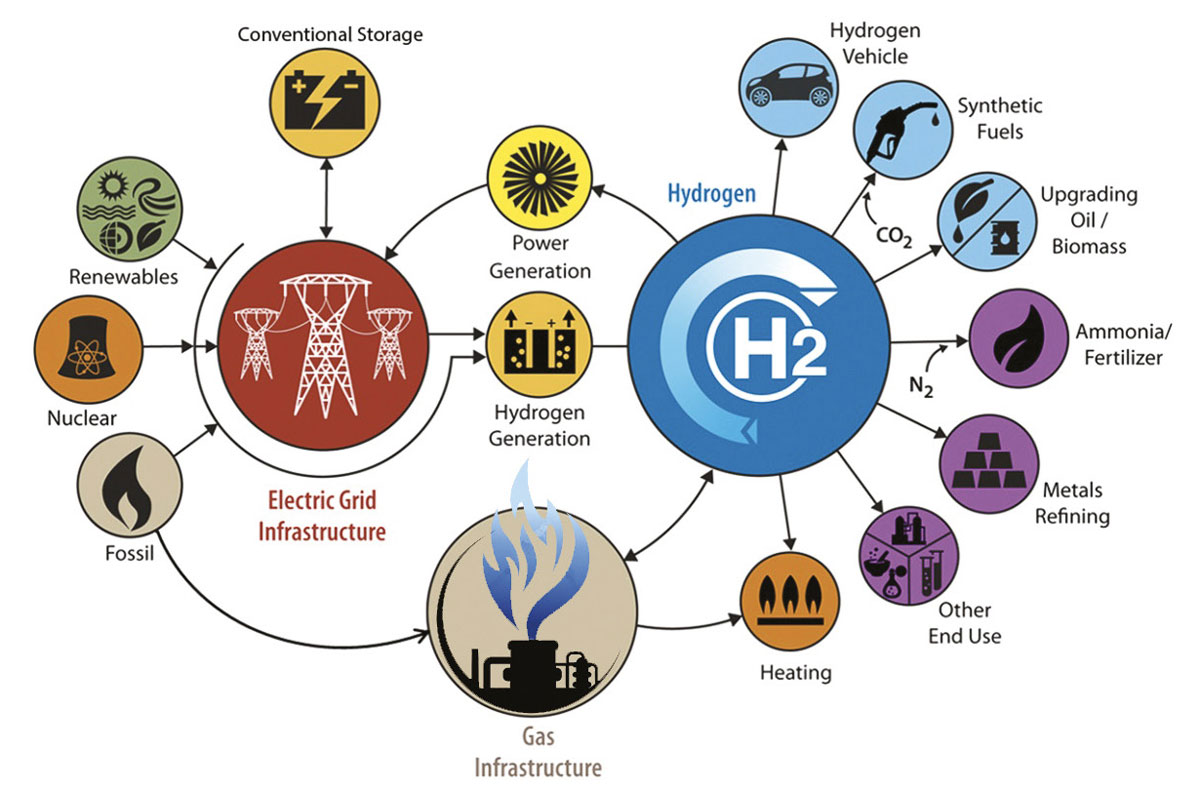FST JOURNAL
Hydrogen and Net Zero
DOI: https://www.doi.org/10.53289/KQYC4215
A major part of the strategy for net zero
Jane Toogood

Jane Toogood is Sector Chief Executive, Efficient Natural Resources, at Johnson Matthey plc. Johnson Matthey is a major player in the research and development of technologies to accelerate the transition towards net zero emissions. This includes technologies for producing clean hydrogen (both blue and green) at the scale needed for widespread decarbonisation. Jane represents Johnson Matthey on the UK Government’s Hydrogen Advisory Council, created to inform the development of hydrogen as a strategic decarbonised energy carrier for the UK.
Johnson Matthey is active in chemical production technologies for producing hydrogen, with technologies for producing both green and blue – as well as today’s grey hydrogen. Considering that 57% of global GDP now has net zero targets linked to it, there has been a dramatic shift recently and there is a great opportunity for British companies to make a difference here.
Clean electricity is clearly going to play a critical role in decarbonisation and wherever possible we should be using renewable energy: for light-duty transport, for heating homes, for businesses, for most applications and for light industrial processes. Where hydrogen has a role is in those more energy-intensive industrial uses, in heavy-duty transportation, in marine applications and indeed for longer-range transport as well.
A wonderful molecule
Hydrogen is a wonderful, small molecule. Not only can it enable energy transition, but it is fundamental in chemical building blocks. For example, hydrogen can be used in the production of ammonia which can be used as a marine transportation fuel and for fertilising crops. Hydrogen when reacted with carbon monoxide is also used to manufacture methanol. And methanol itself is a chemical building block for many consumer and industrial products across the civilised world. So it is very important to think of hydrogen as part of a broad system that is not just about energy but about value chains leading through to consumer goods. We have companies in the UK that are at the heart of that.
A great deal more hydrogen will be needed in the future, and it must be clean. So the use of grey hydrogen will have to be disincentivised through the use of carbon taxes. A global approach to carbon taxes is needed.
The adoption of blue hydrogen technologies will be driven partly by the energy intensity of the usage, partly by geology (because to use blue you need to be able to capture the CO2 that is produced on the way), partly by pace (because the planet cannot wait and so we need to move at pace to decarbonise).
Green also needs to be accelerated through to adoption. Green, of course will be driven by geography, by the declining cost of renewable energy, and of course by incentives. It is likely there will be a mix of all of the different types of hydrogen, with (hopefully) grey diminishing quite rapidly as the world moves towards blue and green and we look towards 2050.
 Hydrogen is part of a broad system that is not just about energy but about value chains leading through to consumer goods. [US Department of Energy]
Hydrogen is part of a broad system that is not just about energy but about value chains leading through to consumer goods. [US Department of Energy]
Looking to the future, the UK has a great opportunity to be a leader in this area. A target has been set in the 10 Point Plan of 5GW of low carbon hydrogen by the end of 2030. That is on a par with the targets set by France and Germany. We could possibly be even more successful and go faster. This will be one of our challenges – to see how we can accelerate and so become leaders, exporting rather than importing hydrogen.
Across the whole global market, hydrogen can probably contribute to a reduction of about 6Gt of CO2, a significant part of the 43Gt that needs to be delivered around the world.
So, hydrogen on its own is not going to get us to net zero, but without it we will certainly not achieve our goal. We do, though, need to be moving at pace on blue and on green hydrogen production and we must make sure we are learning fast and progressing through the requisite technology learning curves.
